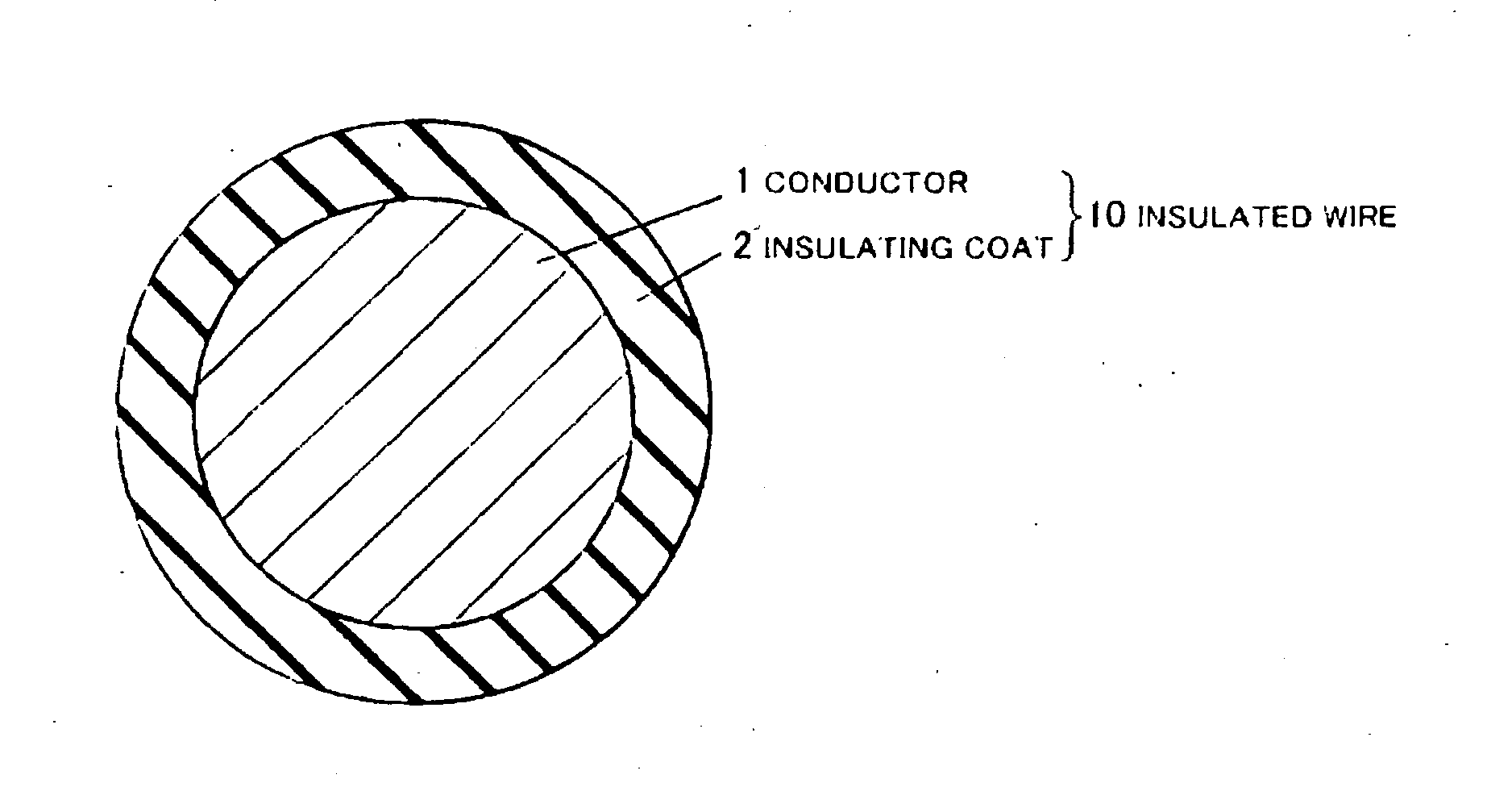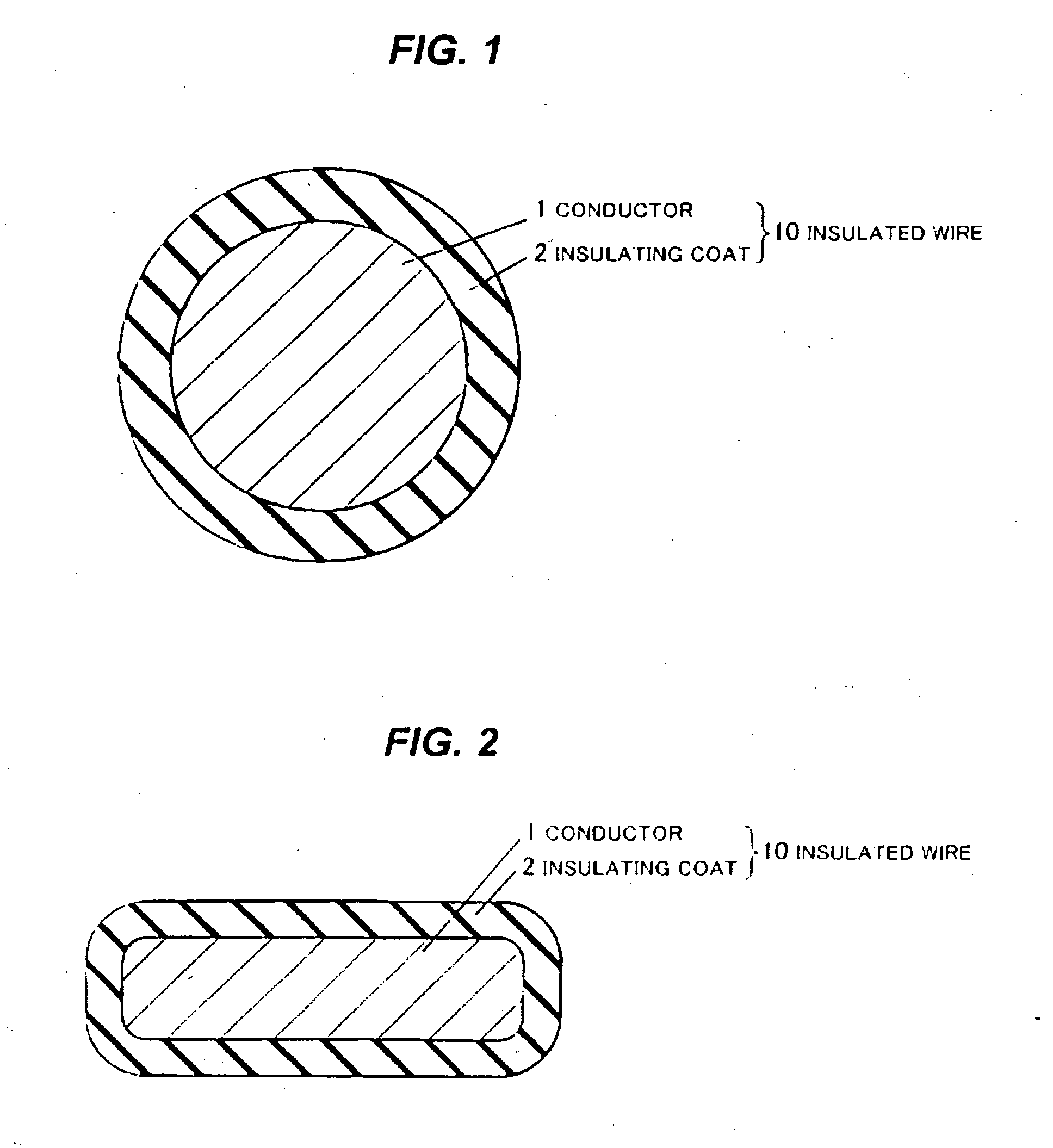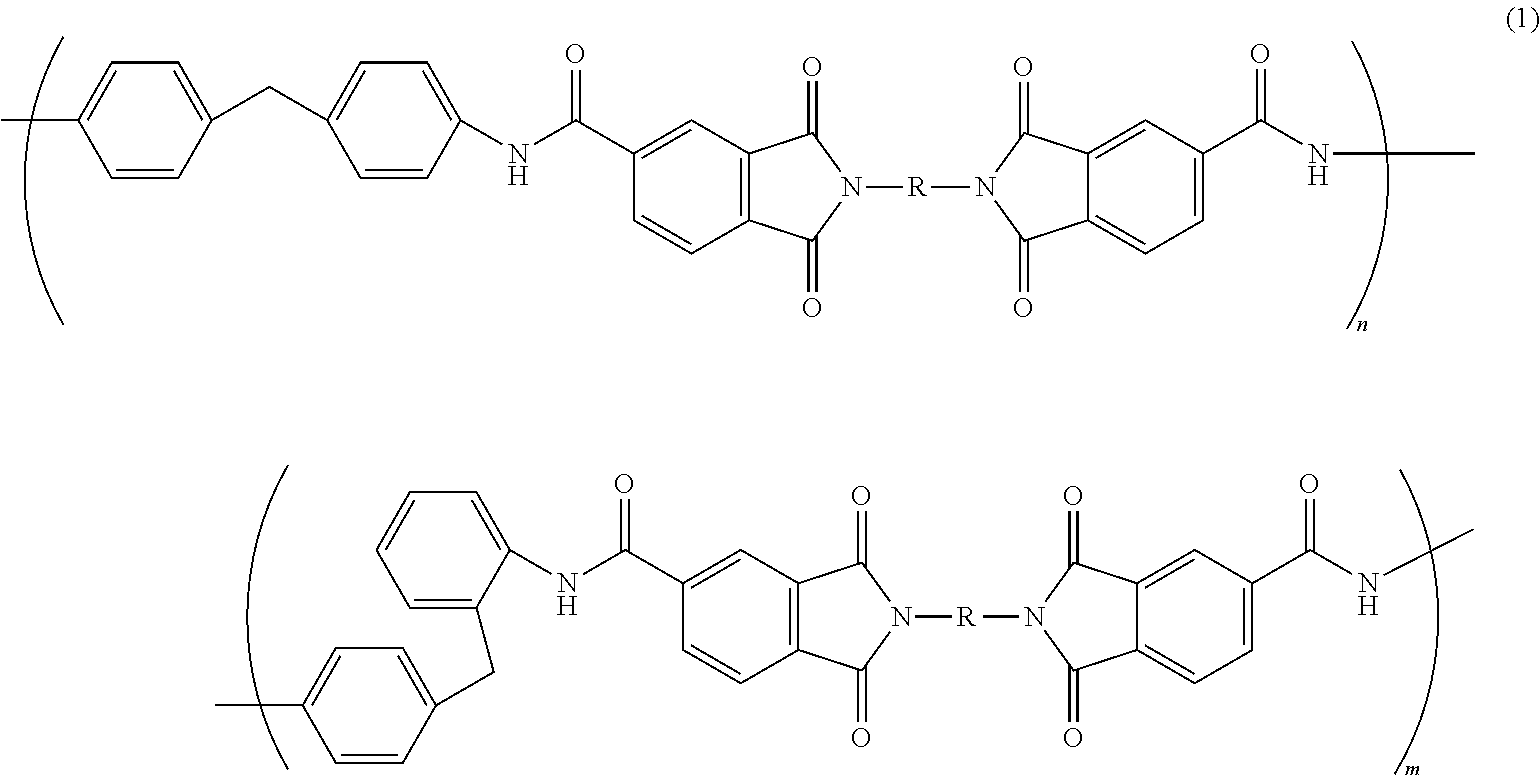Insulating varnish and insulated wire formed by using the same
a technology of insulating varnish and insulated wire, which is applied in the direction of insulated conductors, cables, conductors, etc., can solve the problems of increasing the relative dielectric constant, aggregation of fine particles, and reducing the partial discharge inception voltage of the insulated wire, so as to improve the compatibility with the resin component (x) and the compatibility, and achieve high partial discharge inception voltage. , the effect of improving the compatibility
- Summary
- Abstract
- Description
- Claims
- Application Information
AI Technical Summary
Benefits of technology
Problems solved by technology
Method used
Image
Examples
example 1
[0083]Silica particle sol containing 10 parts by mass of silica component was dispersed into the polyamide-imide resin varnish (A) relative to 100 parts by mass of the resin part of the polyamide-imide resin vanish (A) while the polyamide-imide resin varnish (A) was being stirred, insulating varnish was thereby obtained. Here, dispersion medium and dispersion particles of the silica particle sol were respectively gamma-butyrolactone and silica particles having an average diameter of 12 nm. Then, applying and baking of the insulating varnish on a copper wire having diameter of 0.80 mm were repeated so that an insulating coating was formed in thickness of 0.045 mm. As a result, an insulated wire in example 1 was obtained.
example 2
[0084]Silica particle sol containing 90 parts by mass of silica component was dispersed into the polyamide-imide resin varnish (A) containing 100 parts by mass of the resin component (X) while the polyamide-imide resin varnish (A) was being stirred, insulating varnish was thereby obtained. Here, dispersion medium and dispersion particles of the silica particle sol were respectively gamma-butyrolactone and silica particles having an average diameter of 12 nm. Then, applying and baking of the insulating varnish on a copper wire having diameter of 0.80 mm were repeated so that an insulating coating was formed in thickness of 0.045 mm. As a result, an insulated wire in example 2 was obtained.
example 3
[0085]Silica particle sol containing 10 parts by mass of silica component was dispersed into the polyamide-imide resin varnish (B) containing 100 parts by mass of the resin component (X) while the polyamide-imide resin varnish (B) was being stirred, insulating varnish was thereby obtained. Here, dispersion medium and dispersion particles of the silica particle sol were respectively gamma-butyrolactone and silica particles having an average diameter of 12 nm. Then, applying and baking of the insulating varnish on a copper wire having diameter of 0.80 mm were repeated so that an insulating coating was formed in thickness of 0.045 mm. As a result, an insulated wire in example 3 was obtained.
PUM
| Property | Measurement | Unit |
|---|---|---|
| particle diameter | aaaaa | aaaaa |
| particle diameter | aaaaa | aaaaa |
| thickness | aaaaa | aaaaa |
Abstract
Description
Claims
Application Information
 Login to View More
Login to View More - R&D
- Intellectual Property
- Life Sciences
- Materials
- Tech Scout
- Unparalleled Data Quality
- Higher Quality Content
- 60% Fewer Hallucinations
Browse by: Latest US Patents, China's latest patents, Technical Efficacy Thesaurus, Application Domain, Technology Topic, Popular Technical Reports.
© 2025 PatSnap. All rights reserved.Legal|Privacy policy|Modern Slavery Act Transparency Statement|Sitemap|About US| Contact US: help@patsnap.com



